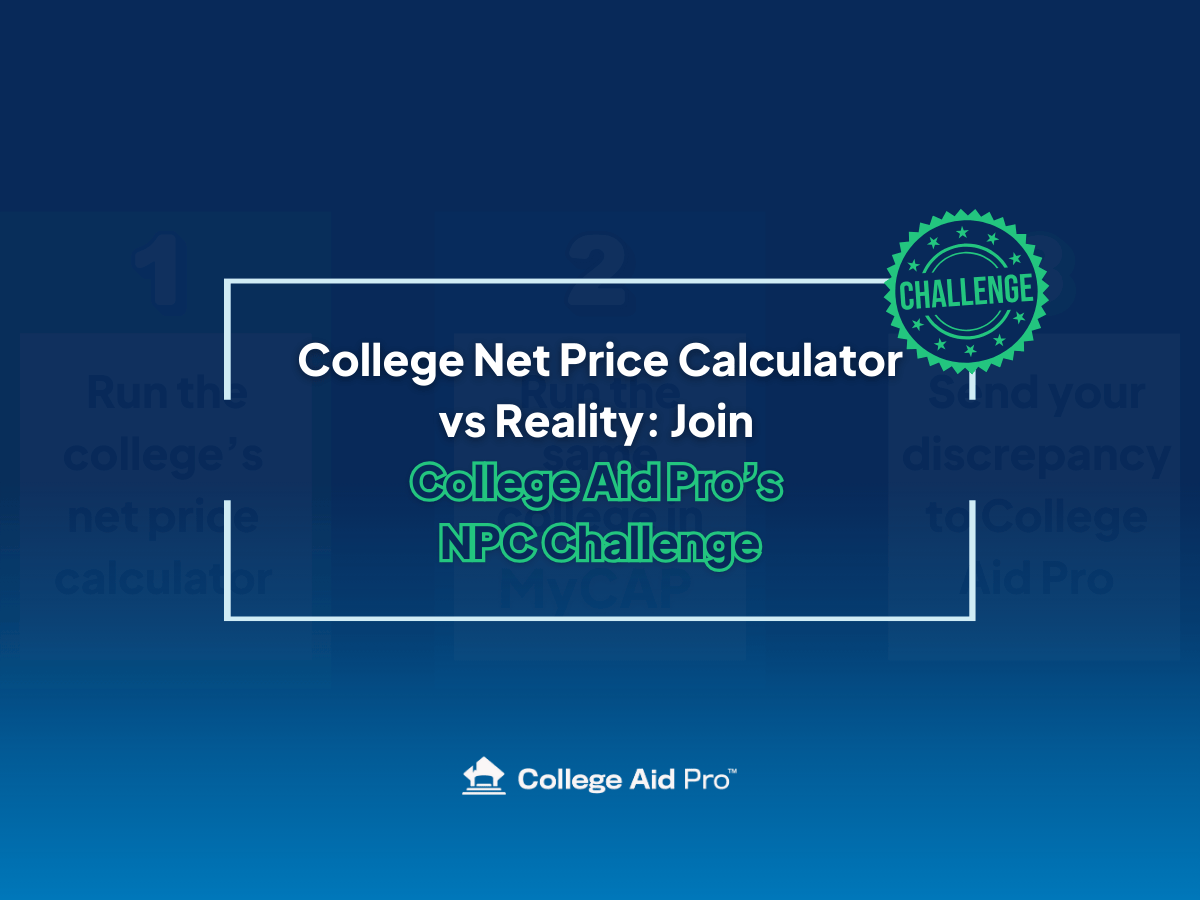Everyone has heard “paying for college” horror stories. Families spend a full summer (sometimes longer) touring college campuses with their rising seniors. They fall in love with a handful of schools, apply, and celebrate when their student gets accepted. Then the inevitable happens – they receive their financial aid package and tuition estimate. The cost of college is so much more than they had anticipated, and there’s no way their current savings and cash flow will cover the bills.
Families in this situation often look to student loans to try and bridge the gap between what they can contribute and what college costs for their child. Unfortunately, this can leave parents and students upside down in student loan debt by the time the student graduates.
There’s a better way to approach the college search process!
At College Aid Pro, we recommend families use the “My College Budget” system to follow an organized approach to selecting the right college for their child – without overspending.
What Is “My College Budget”?
The concept behind the My College Budget approach is simple:
No family should be surprised by the cost of college – and feel forced to take on debt to cover education bills.
Instead, we recommend financing college like you would any other major purchase or investment. By shopping smart, understanding the financial aid process, and setting a budget in advance, you can set both you and your student up for future success.
The My College Budget system is broken down into four easy steps for families to follow:
- Gain a deeper understanding of financial aid.
- Create a budget that works for your family.
- Shop for schools strategically using CAP’s affordability scale.
- Make a decision with confidence.
#1: Understand Financial Aid
The financial aid system in America is broken. The vast majority of students will qualify for some form of financial aid at most colleges. However, oftentimes the loans they qualify for will cause them to start their adult life post-graduation with a mountain of debt. Depending on their family’s financial status, they may not qualify for the federal loans they need to cover the full cost of tuition.
It’s essential to familiarize yourself with the financial aid system at the schools you’re applying to. Luckily, we have several resources available to get you started, including:
- Understanding Federal Student Loans
- How Much Is Too Much to Borrow For College?
- Comparing All Loan Programs
You can also check out our Full Ride Scholarship List, and sign up for your free MyCAP account to assess what aid is available at the colleges on your student’s “to apply” list.
#2: Paying for College by Creating a Budget
Ideally, no family will have to take out student loans to cover the cost of college. We understand that this isn’t the reality for many – but a good budget can get you closer to this goal!
The first step to creating your college budget is to assess what you have available to cover the cost of college. These funds could come from a 529 Plan, grandparent contributions, or other savings sources.
Next, look at what cash flow you have available to cover tuition bills or daily living expenses for your student. This could be a small monthly stipend that parents are willing to set aside from their paychecks or money that a student earns from a part-time job they hold while in school.
Finally, assess what financial aid you can expect to receive from different schools based on the information you’ve gathered in the previous step.
#3: Shop For Schools Strategically
Once you have a handle on how financial aid works and what your family’s unique budget is, you can start to shop for schools. We recommend skipping tours of any schools that you know won’t be financially feasible for you and your student. It’s not worth test-driving a Porsche if you know it’s not in the budget!
Instead, leverage your MyCAP account to build a list of colleges and universities that have financial aid policies that match your student’s academic record and your unique financial need. CAP has created an affordability ranking system that can be customized to your family’s financial situation. The rankings are:
- Ideal = 0 borrowing
- Great = less than 27K total
- Good = less than starting salary of their discipline
- Caution = any amount above their likely starting salary
Then, schedule tours of colleges you know are in your College Budget and meet your affordability criteria to see what feels like the best fit. This is where the college search gets exciting! When you know you’re looking at schools you can comfortably afford without putting your student (or yourself) in debt, you can focus on:
- Location
- Degree programs
- Extracurriculars that are available.
- Student body and values
These items can help you to narrow down your list even further to schools that are both a financial and an academic/lifestyle fit for your student!
#4: Make a Decision With Confidence
You’ve got your list of schools in hand, and your student can choose to apply to any and all of them. Then, once you receive acceptance and financial aid letters, you can make a decision on where to attend with confidence!
Remember that finances should absolutely be a factor in your decision, but because you’ve done the legwork, determined how much you can pay for college, and created a “My College Budget” on the front end, all of the schools your student is accepted to should be fair game at this point.
How Can CAP Help?
Using our My College Budget system, you can prepare for the cost of college in advance, and save any potential heartache that comes with getting into a school that isn’t financially feasible for your family. This unique approach helps you and your child start to view college as a true financial investment. It’s a major purchase that will help your child set themselves up for future success in their career and in life.
Need help creating a My College Budget?
We recommend starting by setting up a free MyCAP account. Through your account, you can access data from thousands of colleges across the country. We have a net price calculator, scholarship list and search function, Expected Family Contribution (EFC) calculator, and more available to members.
This is the perfect way to launch your college search and ensure that you and your family find the best possible college for you – and your wallet!



